Case Study of Good T&L Practices > List of Case Studies > Dr Tulio MAXIMO

Dr Tulio MAXIMO
School of Design
The Hong Kong Polytechnic University
Awardee of 2022
(Category: Early Career Faculty Members)
Dr. Tulio Maximo is an Assistant Professor at The Hong Kong Polytechnic University School of Design. Tulio aims to collaboratively improve society by including individuals and institutions in knowledge development. His research interests include intergenerational and inclusive design, mobility devices, sitting ergonomics, design-led social entrepreneurship, healthcare services, and inclusive education. Tulio teaches ergonomics, capstone projects, and cooperative projects and has created the elective subject Design Meets Disabilities. He has received numerous awards for his design and teaching, including the UGC Teaching Award 2022 as an Early Career Faculty Member and the Red Dot Product Design Award 2022 for the design of the Omni Study System for children living in subdivided flats. Tulio’s teaching philosophy is inspired by value creation education and universal design for learning, and he advocates empathy as a core teaching and learning strategy.
Empathy as a core teaching strategy
The three essential qualities of a creative leader are empathy, clarity, and creativity. Empathy is the ability to recognize, understand, and reflect on the thoughts, feelings, and behavior of others1. It helps students to gain insights into the experiences of a diverse population. As a teacher, I believe that empathy is key to developing the creative leaders of tomorrow and instilling in them the goal of creating a more equal and diverse society. I use empathy as a core teaching strategy and apply theoretical content to solve real-world problems, encourage my students to practice these theories, and attempt to stand in their shoes to improve my teaching. In terms of my achievements when applying this approach, over the past five years, I have created the elective subject Design Meets Disabilities along with a virtual exhibition and two physical exhibitions (Figure 1) to showcase students’ work; these have had over 500 virtual visits.
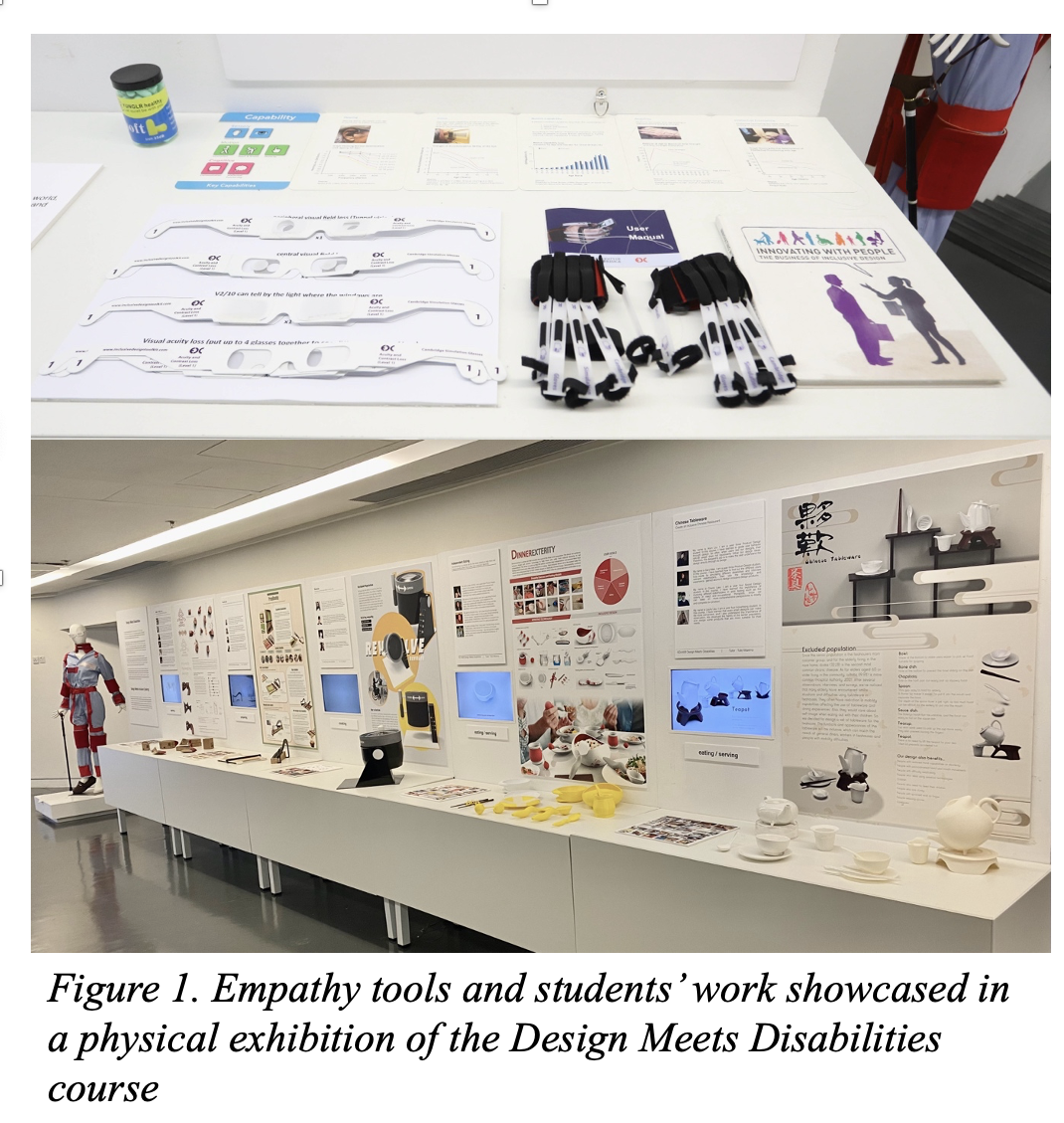
As the outcomes of my collaborative approach, my students’ works have been successful and received awards, and I have obtained two licensing agreements with external organizations. I have cooperated with other PolyU departments, such as in creating a VR learning experience, and I co-designed a furniture system with students and the community for children living in subdivided units (SDUs). I received the PolyU School of Design Teaching Excellence Award 2020/21.
Why I teach
As a child with ADHD, I experienced various learning approaches. I spent half of my school life in alternative schools, where I faced occasional mock-up exams, and the other half in one-size-fits-all schools, where I regularly faced long exams. These made me feel inferior, as I often struggled to stay focused during long lectures and exams and to memorize and recall information. These experiences inspired me to become the type of teacher that I never had and to promote the kinds of learning experiences that I dreamed of. As an inclusive designer, the reason I teach is to develop creative leaders who will collaboratively change society.
Empathy in theory
My ideal learning experience is one that permits all students to master the subject. I base my classes on the principles of the Universal Design for Learning (UDL) and inclusive education, and on the concept of capability versus demand as espoused at Cambridge University. For example, I divide each class into three sections: Theory, Tools, and Training (the 3 Ts). In the Theory section, I introduce key concepts and use a persona to put the relevant theory into context (Figure 2). Personas represent archetypal users of products and services. Their goals and personal characteristics are indicative of the needs of larger groups of users.
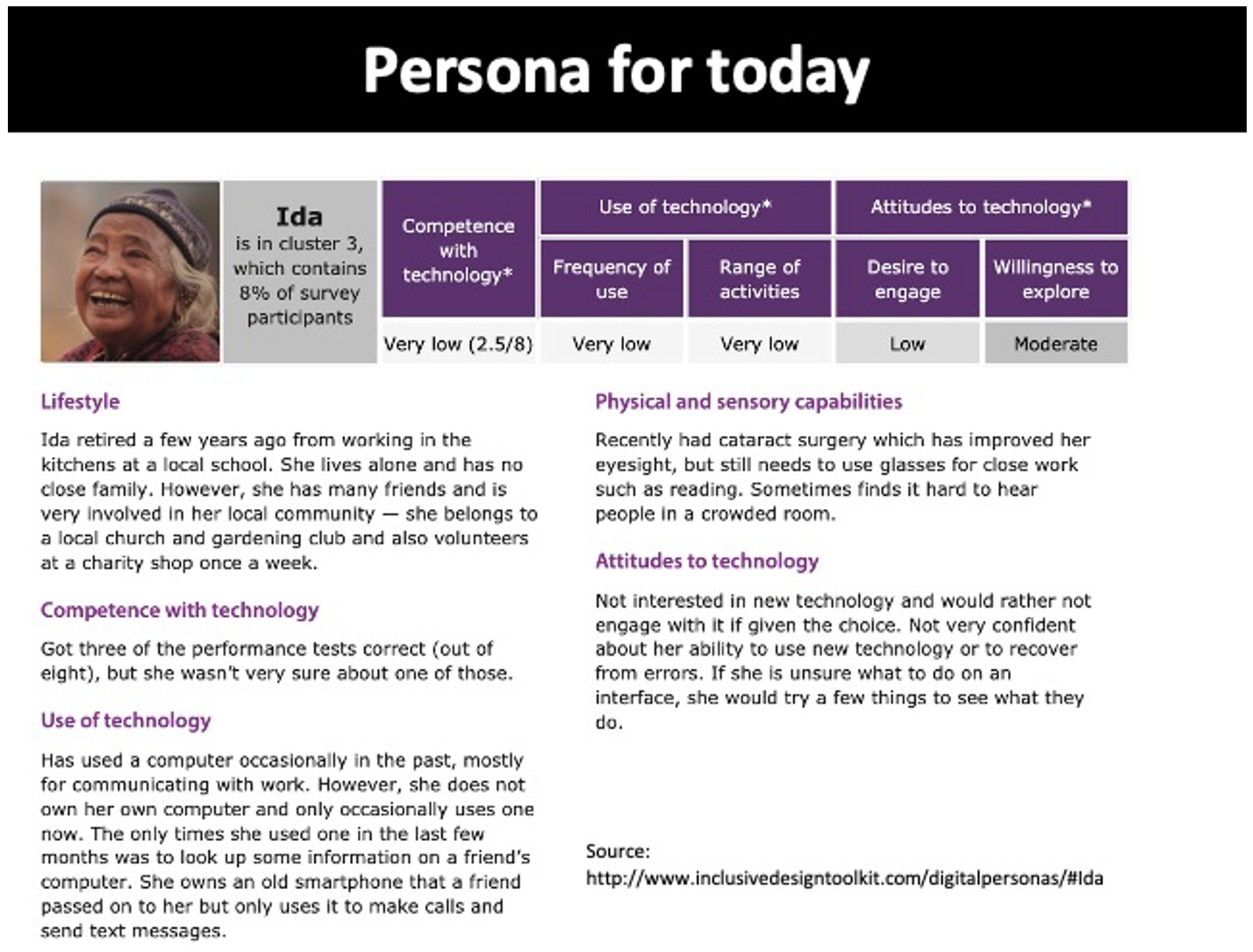
For example, to introduce the theory behind vision capabilities in my Ergonomics classes, I first introduce a persona with reduced vision capabilities (Figure 2). I then describe each part of the eye and its function, making associations with concepts familiar to the students, such as a camera lens. I explain how each vision capability (or lack thereof) affects the persona’s interactions with the objects, spaces, and systems that the students will someday design. I exert considerable effort to provide evidence-based persona profiles. When I cannot find such a persona, I design one. Part of my UGC Teaching Award-funded project is to design personas representing the diversity of the Hong Kong population that can be used in higher education. I conclude the Theory section by summing up how theory applies to design, such as by listing design guidelines and showing case studies (Figure 3).
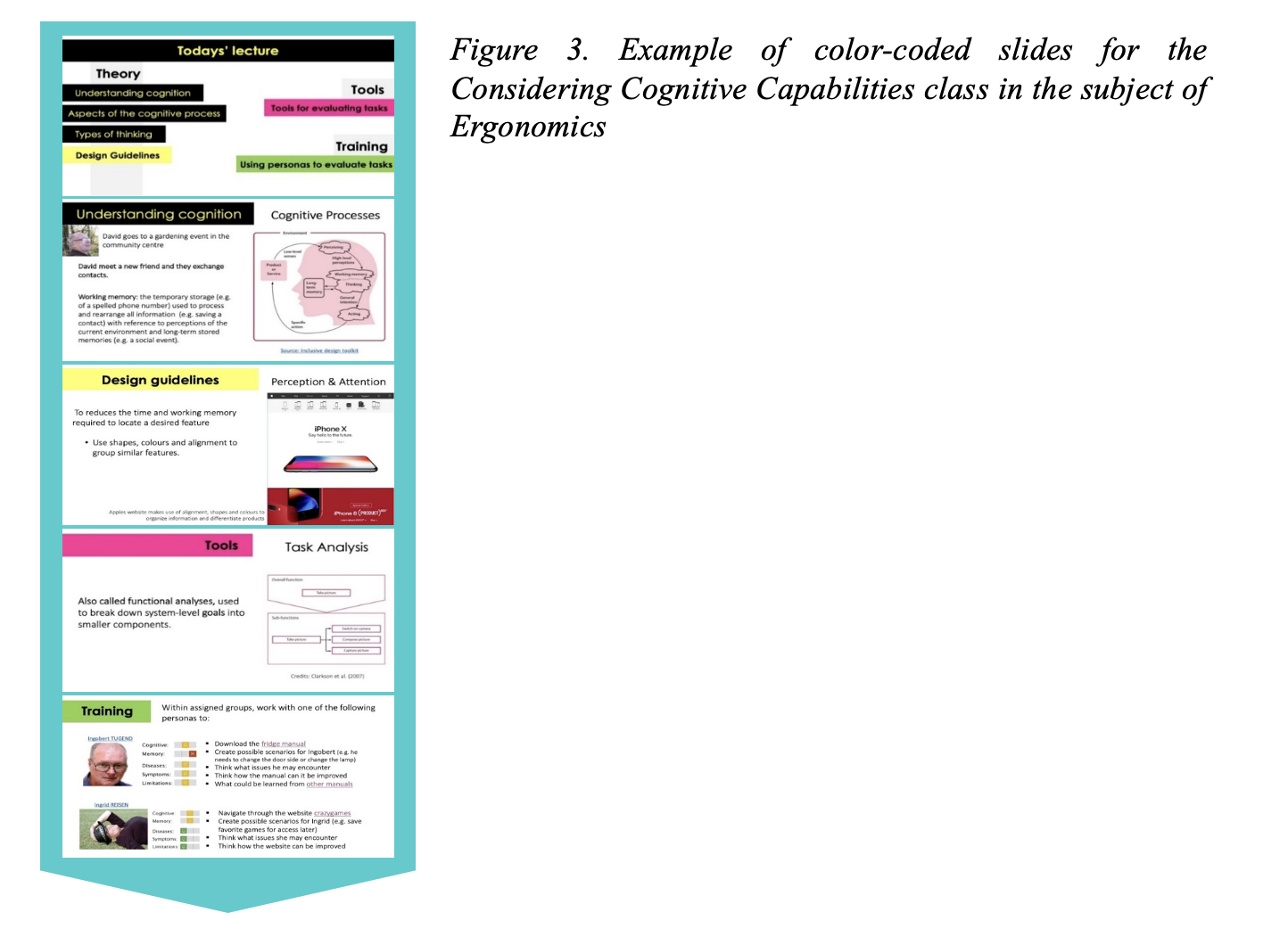
Empathy in practice
For the Tools section of the class, I introduce a range of tools and methods that students can use in their assignments, their capstone projects, and their design or research careers. For example, when teaching about vision, I introduce various tools that simulate a lack of visual capabilities (such as simulation glasses and impairment simulation software), and I apply methods that can be used in combination with such tools (such as verbal protocols and scenario-building).
Next, in the Training section, the students experience some of the tools and methods that I introduced in the Tools section. For the visual capability example, I give each student a pair of glasses that simulates a reduction in visual acuity (Figure 1) so that they can interact with products and systems from the perspective of a person with a disability. For those attending online, I teach a DIY version of the tool and exercise (Figure 4).
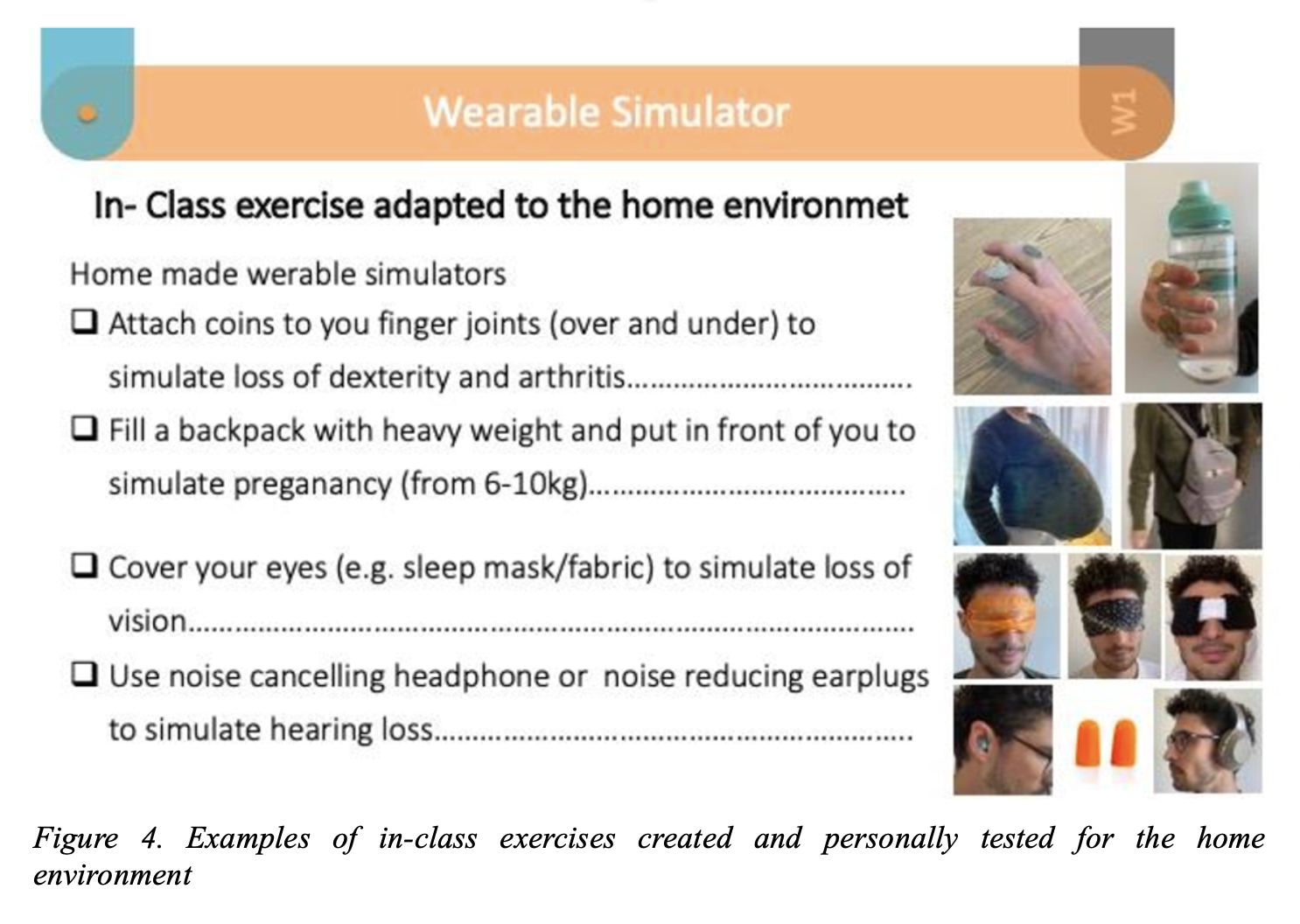
In 2023, in addition to wearable simulators, we introduced an immersive virtual reality (IVR) workshop to simulate the cognitive conditions frequently experienced by older people, such as getting lost and delirium (Figure 5). This is part of a successful large-scale Teaching Development Grant collaborative project led by Dr. Justina Liu from the PolyU School of Nursing.
Using the 3T structure facilitates action learning and encourages students’ information recall when necessary. This recall is supported by color-coded slide sections, which facilitate content review and application.
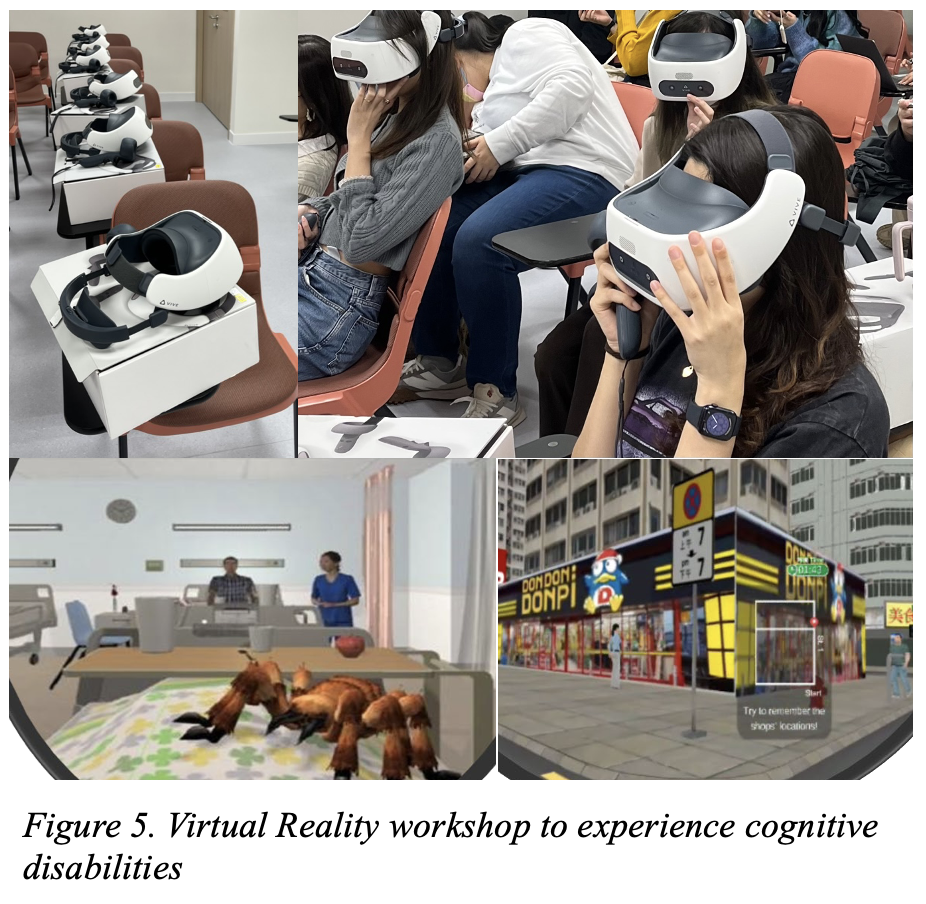
Empathy in learning to teach
My ideal learning experience involves respecting the diversity of students’ learning and helping them to discover and achieve their full potential. To set an example and connect with my students, I acknowledge my ADHD disability, and I explain how I have learned to live with it and use it in my favor. Most importantly, I apply empathy to stand in students’ shoes and thus improve my teaching. An individual’s typical attention span is a maximum of 25 minutes, so I engage the students every few minutes with active learning (e.g., a quiz or a short exercise related to the theory or to the persona’s life).
After each section (the 3 Ts), I give the students a 5- to 10-minute break to prepare them for another section and to engage with them individually, as some are too shy to make comments during class.
I consider the learning demands of students along various spectrums (e.g., ADHD, dyslexia) and test out the in-class and out-of-class exercises myself (Figure 4). In addition to improving the assignments, testing them helps me to assess and acknowledge any potential risks.
I provide the reading materials for each class in the course syllabus and update the class slides into the LMS before the day of class, thus allowing students with different learning paces to review the content before class. In addition to the in-class exercises, I provide students with a menu of home activities to choose from. The activities are not always mandatory but are provided for students who would like to investigate the subject matter in more depth.
As most design assignments are group projects, I use the Reflective Learning Journal as a core individual assignment to assess students’ progress and learning experiences. The journal also helps the students to understand how they learn and to reflect on how the learned content applies to their daily lives and projects. I engage the students in deciding the format of their assignments instead of imposing one template on all of them. Although I provide references and templates, I discuss their professional goals and the areas in which they would like to improve to help them choose the appropriate format for their assignments. For example, I mentor students who want to continue their studies after graduation toward an academic-style capstone report, whereas I mentor those aiming to start their own businesses toward a business-plan style of report.
I review my teaching strategy and the class content using the eSFQ’s open-ended comments, students’ reflections from learning journal assignments, informal feedback, and my own teaching journal. I also closely follow students with disabilities, asking for their feedback during and after the course. Improvements that I have made in response to students’ feedback include shortening theoretical sections, bringing in more external speakers to share cases and tools, and creating more engaging opportunities before, during, and after classes.
Collaborative teaching and learning
Design is an interdisciplinary subject in which teamwork and creativity are essential. To train students in these lifelong skills, I use group project assignments with a mix of group and individual tutorials. During tutorials, I mentor the students on creative leadership and stimulate their critical thinking. Instead of telling them what to do, I assure them that they can solve their own projects’ issues, and I then guide their reflective thinking until they solve the problems themselves. To stimulate interdisciplinary learning, I partner with other departments. For example, for the Design Meets Disabilities subject, I partner with the PolyU School of Occupational therapy. Students and staff are invited to sit in on the collaborating department’s introductory lecture and on students’ interim and final project presentations. My department recently suggested that the elective be offered as a minor for students in other departments. In 2023, two engineering students enrolled, who brought their own specific expertise and experiences to the course.
I always encourage my students to tap others’ expertise for their interdisciplinary projects. In the past year, students in my courses have reached out to other students or staff from the PolyU School of Nursing, School of Occupational Therapy, Institute of Textiles and Clothing, Industrial and Systems Engineering, Industrial Centre, School of Optometry, Biomedical Engineering, and the Faculty of Health and Social Sciences.
In addition to internal cooperation, I also invite external speakers to share their experiences. For the elective subject Design Meets Disabilities, I invited lecturer Dr. Emilene Zitkus from Loughborough University (U.K.) to share her experience in designing one of the Inclusive Design Toolkits that we use during the in-class exercises. I also invite PolyU SD alumni and postgraduate students to share their experiences during and after graduation.
I promote collaboration with external organizations so that the students can engage in real problem-solving. Before the COVID-19 outbreak, students from the Design Meets Disabilities course co-designed with visually impaired residents from the Hong Kong Society for the Blind. This organization was also our partner for a cooperative project in 2020, in which students redesigned two rooms for the Society’s headquarters. In the same subject in 2018, students redesigned the interior of the Rehabus, a service for Hong Kong people with disabilities, and also created their 40th-anniversary video campaign. In 2019, students worked for the Jockey Club Design Institute for Social Innovation (JCDISI) to design an inclusive fitness trail in Kowloon Park (Figure 6).


In collaboration with JCDISI and the Salvation Army, I engaged students and staff from the PolyU School of Design, School of Optometry, and Biomedical Engineering to co-design a furniture system for children living in SDUs in Hong Kong (Figure 8). The project won the Red Dot Product Design Awards 2022 and the Good Design Awards 2022-23, and, more importantly, it received multiple donations to mass-produce and donate over 2000 units of the furniture system to families living in SDUs.

There is no greater joy for me than to hear how my teaching and mentoring have had a positive and long-term impact on my students’ learning and personal lives. Engaging my students in community projects has improved their thinking and understanding of the various aspects of the role that design plays in the community. The key evidence of my impact on students’ learning outcomes is provided below.
Consistently excellent student feedback on my teaching practice
The Student Feedback Questionnaire asks students to evaluate aspects of my teaching by rating statements such as “The teacher’s teaching inspired me to think creatively” and “The teacher encouraged me to make informed judgment” on a 5-point scale. My students have consistently given me very high scores, with an average of 4.56 points (see Table 1), which is 0.35 points higher than the norm
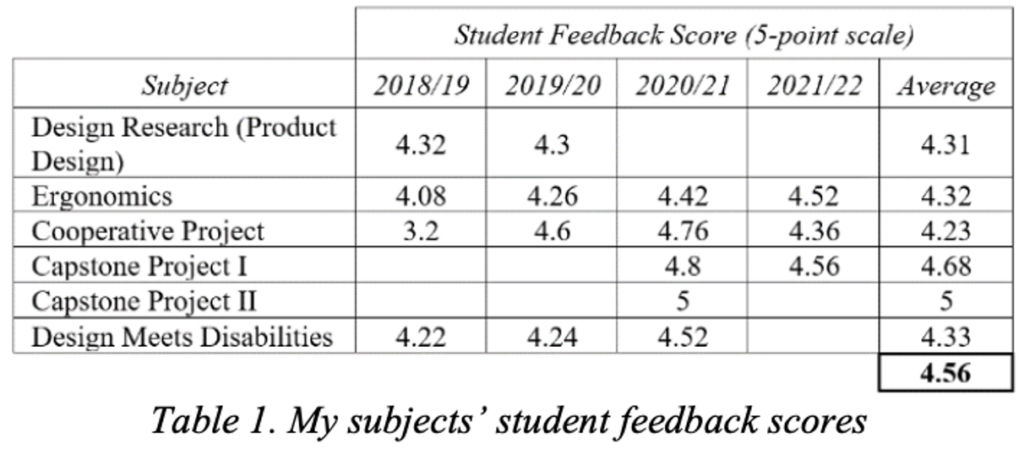
Higher academic achievement
I started supervising capstone projects in 2020/21. Overall, the grades of the students in my tutorial group were higher than those of students under other teachers’ supervision for both capstones 1 and 2 (Table 2) (note that the capstone subject grades are moderated by tutors who also grade other tutorial groups).
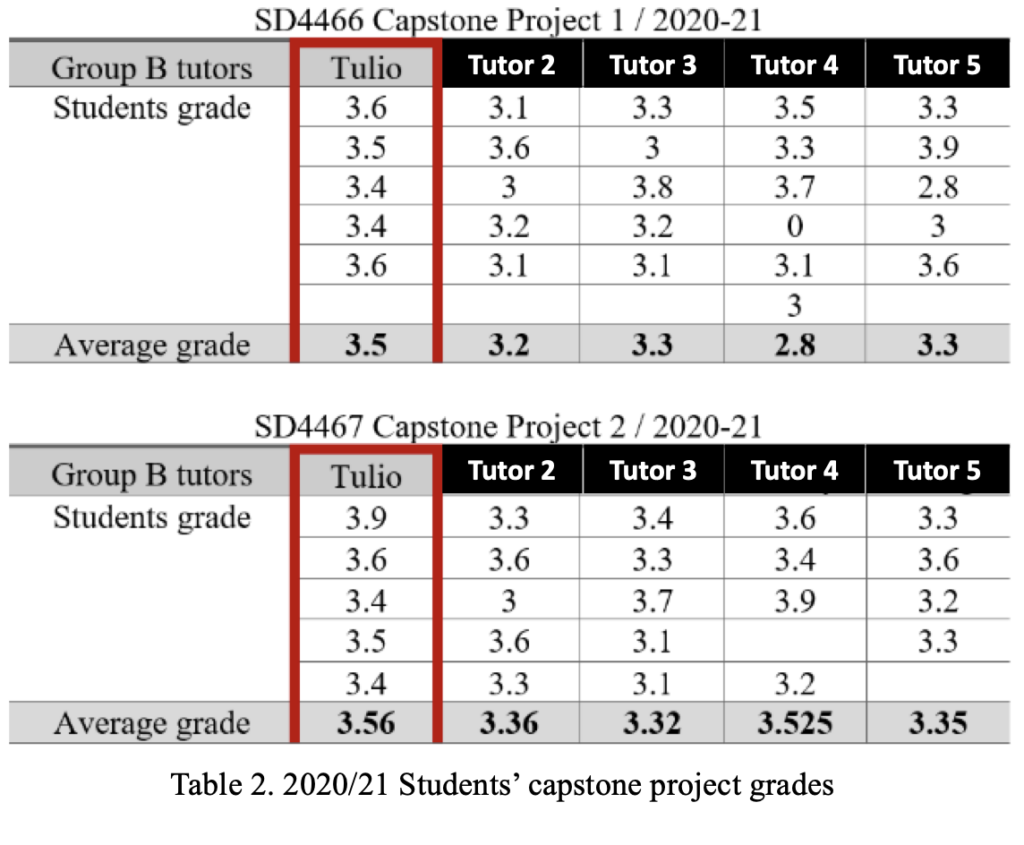
Students’ designs selected for exhibition and awarded in competition
I was the product design tutor for most of the capstone supervisees selected to exhibit their designs at the PolyU Design Show 2021 (three out of my five capstone project students). The capstone project of one of my supervisees, Sophia Hong I Tse, was the National Runner-Up for the James Dyson Award (Hong Kong Region).
Students admitted to top design school and hired by top design company
Benny Bangning An and Zhan Wen, who were both under my supervision and who graduated in 2021, were admitted to the Royal College of Arts, which is ranked the number one art and design university, to pursue a Master’s degree. Charlie Xiaoyang Chen, a 2021 graduate, is employed as a junior industrial designer at Ponti Design Studio.
Students’ continued social impact after graduation
Lee Pak-long, a 2021 graduate, joined the Jockey Club Design Institute for Social Innovation and has made significant contributions to their social design projects. We still keep in touch and talk about his design ideas.
Hasmita Chilukuri, a 2020 graduate whom I mentored in three subjects—Design Research, Ergonomics and Inclusive Design—has secured funding from multiple sources such as Good Seeds and Techathon to start an inclusive social enterprise business with her friends.
Improved understanding of and design for users
I ask my students to write personal reflections on their experiences of working on the project for Design Meets Disabilities and Ergonomics. I enjoy reading these reflections, as they provide useful information about the students’ learning gains. The extracts below demonstrate the positive effects of these subjects and of the empathy approach on their thinking, and particularly on their understanding of users and the role that design can play in the community:

Generalizing the empathy approach to other disciplines
The empathy approach to teaching can apply to any discipline attempting to bring theory closer to students’ understanding and to demonstrate the impact of their study topic on people’s lives. For example, using personas can help students from healthcare disciplines to understand different patient lifestyles, values, and expectations and why they may resist care, thus stimulating discussion about this issue. Wearable simulators can enable empathy training in various disciplines such as medicine and occupational therapy. The empathy approach in engineering and architectural studies helps students to understand the impact of their future designs on people’s lives. Empathic thinking can inform infrastructure systems so that they are consistently human-centered, individual- and communal-sensitive, justice-oriented, and values-based, which are four critical characteristics of a resilient system. From a business studies perspective, empathic thinking allows students to view customers in new ways and to expand into previously untapped markets.
